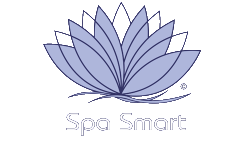Salt and Heat’n’Honey Healing Ritual (Scrub & Soft Tissue Massage)
1. Peeling with salts from the Dead Sea: The therapy is ideal prior to any massages and body treatments. Using it effectively removes the dead cells, a better smoothing of skin texture is achieved, stimulates cell recovery and increases overall microcirculation. The look and vitality of the skin are returned, the tissues tone and strengthen. Dead Sea salts are highly mineralized, enriched with natural plant oils of avocado, sweet almond, macadamia and others. After the therapy is applied, as a final result, the body feels very energized and the skin – smooth, radiant, refined, silky soft and with a delicate scent.
2. Infra-Red Blanket or Thermo Blanket Honey Polish Sweating: opens your skin’s pores for the exchange: the toxins, waist and fat cells exit the skin’s epithelia and the honey penetrates inside. Warning: Do not try honey massage, if you have varicose veins on the cellulite spot, you are pregnant or you are allergic to honey. (Substitute with Chocolate Therapy or Papaya Body Polish and Massage)
3. Honey massage exposes the skin to a natural humectant (honey), a substance that facilitates the retention of water. By moisturizing the skin, the honey massage helps the patient to feel healthier. At the same time the honey massage produces noticeable changes in the skin. It can transform the skin in two different ways. It can aid the removal of salts and toxins, and it can promote nourishment of the skin.
A honey massage should, if done properly, lead to formation on the skin of white-gray pellets. Such pellets typically resemble plasticine, a synthetic substitute for clay. Such pellets hold the toxins and excess salts that have been released from the body during the massage. If not trapped by the tiny pellets, the toxins and excess salts could inflict possible harm on the body.
The massage therapist uses a moist, liquid honey. A well-chosen honey contains certain important nutrients. Those nutrients will enter the skin during the honey massage. Those nutrients supply the skin with chemicals that are often absent from an individual’s daily diet. In that way, a honey massage has the ability to provide the skin with added nourishment.
While the liquid honey allows the massage therapist to work with a natural substance, the prescribed method application of the honey could hardly be called “natural.” The therapist pours the honey over a designated region and then claps sharply on the honey-covered skin. The resulting pain is the one drawback occasionally mentioned by someone who has undergone a honey massage.
That clapping should continue for 10 to 15 minutes or until the honey is no longer sticky. At that point, the pellets, which hold toxins and salt, should appear on the skin’s surface. Depending on the patient’s skin type, the clapping procedure should be repeated up to 10 times before providing the skin with a one month reprieve.
The success of a honey massage depends largely on the quality of the honey that is used by the massage therapist. When a massage therapist uses a good-quality honey, then the honey massage should provide the patient with four different benefits.
The honey massage cleans the skin. The honey massage nourishes the skin. On skin treated with a honey massage, wrinkles will disappear. The patient who has received a honey massage will note that his or her skin demonstrates an increased elasticity.
A honey massage is a relaxing experience. Like other types of Ayurvedic treatments, it can prove helpful in ending a stress-induced condition. By tapping into the link between consciousness and health, a honey massage could prove of benefit to someone with cellulite, hypertension, to someone who wanted to fight the desire to smoke and to someone who hoped to counter a tendency towards obesity.
